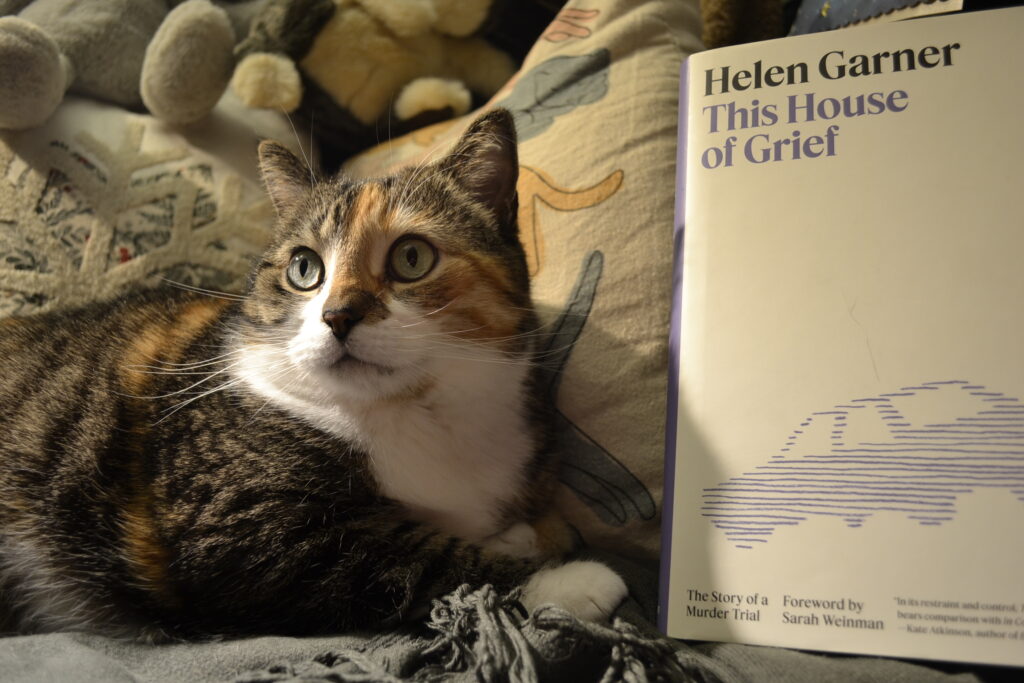The Struggle to Get Outside
I can remember being a kid and leaving the house behind for entire days to play outside in the garden or in the woods behind an adjoining field. Now? I’m struggling to go outside twice a week. For the last year, myself and my lovely spouse have managed to fit in a hike a week, but we’ve decided to try to up that to two hikes a week and, apparently, that’s a whole different kettle of fish.

You’d think it’d be easy. Just go outside. Start walking. But it seems like the chores inside are always calling or else work gets in the way. One of the worst things about being an adult is that it feels like so much time gets away from you. So much time belongs to things you don’t actually want to do and don’t feel particularly invested in.
But I’m hoping that we can take January and start to make more time for us and to turn things around. We definitely need to get over the obstacles and to get outside.

A Good Non-Fiction
In the last year, I’ve actually gone back to reading a lot of non-fiction books, which those of you who watch my Instagram stories probably know since two of them made my top books of 2023. Those being Elena Kostyuchenko’s I Love Russiaand, the book I’m posting about, Helen Garner’s This House of Grief. A good non-fiction book is just as complicated to write as a fiction one and includes a mastery of many of the same elements. Writing style, writing technique, tone, and description have to be both well done and exist in an ideal balance. If so, then even a boring subject can be compelling. But, if not, even an enthralling subject can be completely dry and unreadable.

This House of Grief details the trial of Robert Farquharson. One night in 2005, the car Farquharson was driving left the road and entered a dam. He swam to safety, but his three children drowned in the car. Was this a tragic accident? Or did Farquharson commit a triple homicide as revenge against his ex-wife? Garner presents the crime in detail and recounts the trial as she witnessed it.

More Than a Trial
Garner documents the trial very skillfully, but I think what makes This House of Grief a great book is that she doesn’t just stop at the trial. She carefully examines the reactions of Farquharson’s family, friends, the eye witness, the experts, the attorneys, and even the rest of audience watching the judicial process. Garner looks inwards too. The reader is treated to what she thinks and feels and her emotional reaction to the crime itself as she tries to wrap her head around someone committing an unthinkable act of violence.
Too much of any one of these elements would have easily rendered the book at best unmemorable and at worst unreadable. However, Garner expertly uses them to create a tapestry that allows the reader see the case from every angle and truly feel like they could have been sitting next to her in the gallery.

Objectivity
The presentation of so much information about multiple perspectives, including the defence and the prosecution, allows the reader to make up their own mind about Farquharson’s guilt or innocence. Many non-fiction books, especially ones focussed on a crime, usually pick either the perpetrator’s or the victim’s perspective. They are set up to argue or convince the reader of one viewpoint or the other. Garner manages to present her opinion, but also leave room for the reader to form their own — something that is very rare indeed.
When I’m looking for a non-fiction book on any subject, I always look for either own-voices narratives or else objectivity. Historical texts often have some kind of bias and one can read them as long as one accounts for that. But, in a modern reference book, there’s no excuse for prejudicial writing, and I would recommend doing a bit of research and asking a lot of questions whenever you read something that makes claims on being factual and objective to make sure that it is what it says it is.

Rearranging Schedules
I’m hoping to take January and somehow rearrange our schedule to prioritize hikes and outside time. Start walking downtown again, start just taking breaks when we feel like we need them. Far too often, work has felt like pressure to get every task done instantly regardless of what that means for our physical and mental health. That simply can’t continue or we’re going to burn out and then it will really be hard to work our way back from that point.
If there’s one thing I have learned, it is that it’s best to take time for yourself before you get too frayed. That’s exactly what I’m planning to do.

